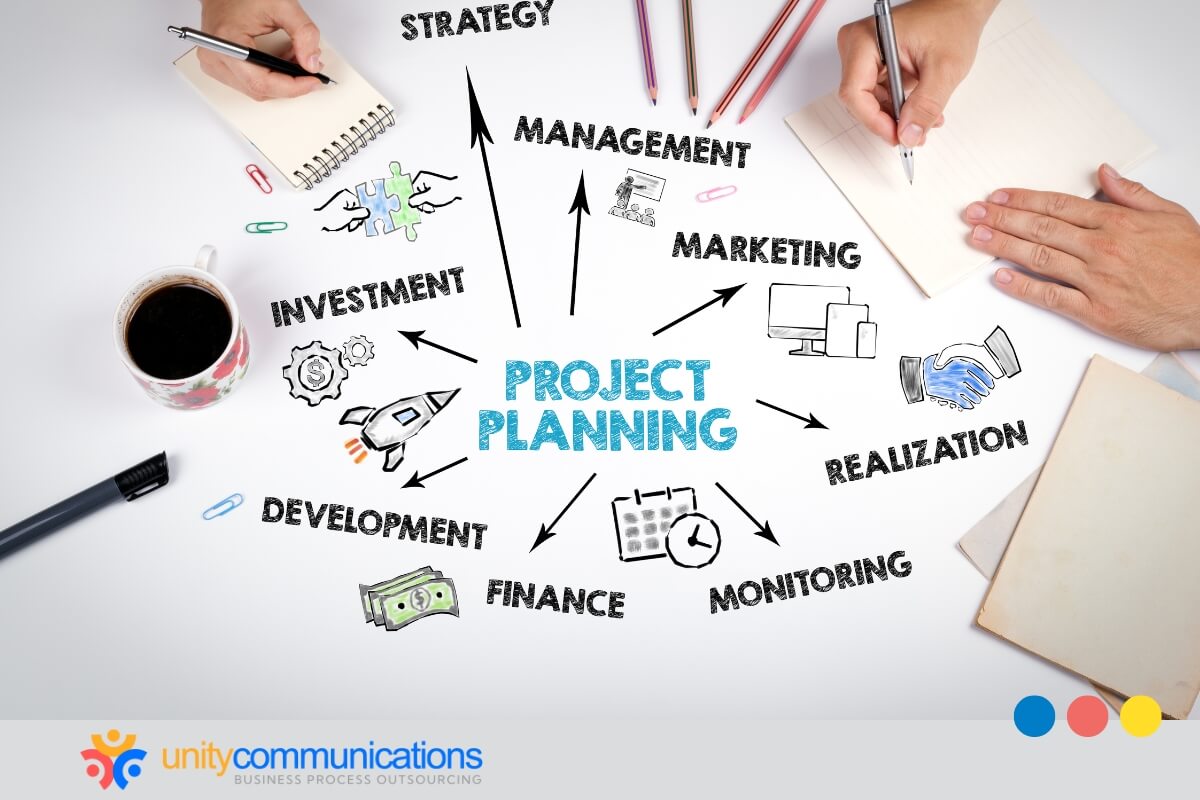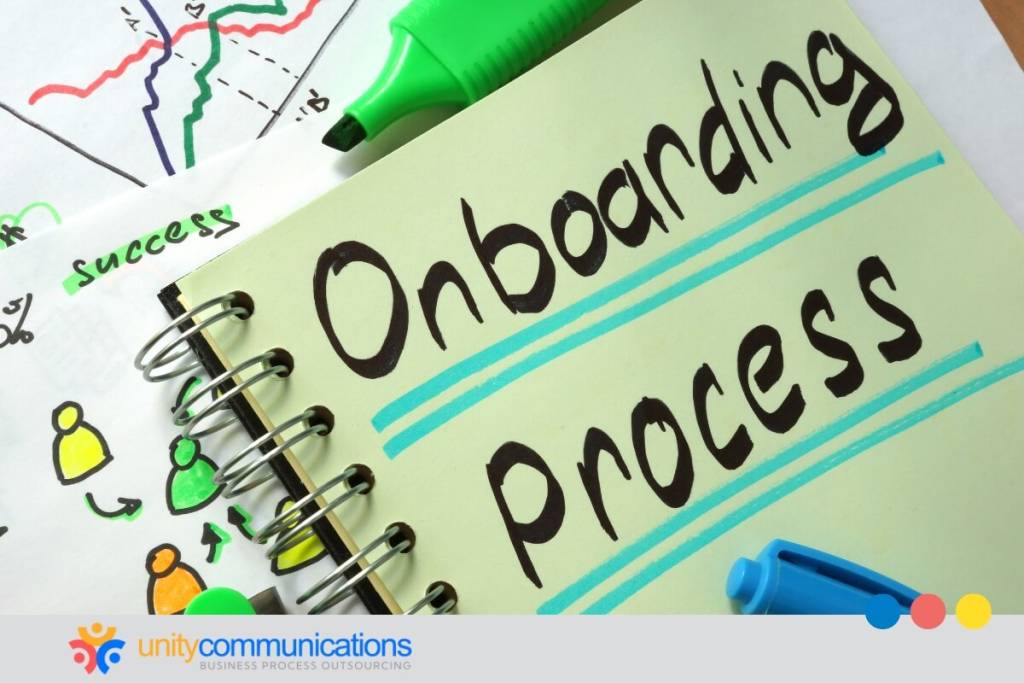Table of Contents
Effective client onboarding is critical for service providers aiming for long-term success. It shapes initial impressions, aligns client expectations, and enhances retention, partnership, and trust.
The client onboarding process sets the tone for the future relationship between business process outsourcing (BPO) firms and their clients. It promotes a smooth transition and lays the foundation for solid collaboration and sustained growth.
This article delves into the benefits of a well-executed BPO client onboarding process. It also outlines key strategies and provides a hypothetical case study to illustrate how to apply them in real-world scenarios.
Keep reading to learn more.
The benefits of an effective BPO client onboarding process

What is BPO, and why is a client onboarding process necessary in this practice?
BPO entails assigning business functions to service providers. The strategy combines back-office (billing, data administration) and front-office (customer support) functions. BPO services can originate from nearshore, offshore, and onshore destinations.
On the other hand, the client onboarding process in outsourcing incorporates new clients into the BPO providers’ systems, ensuring successful collaboration. Its primary features include:
- Initial consultation to determine the client’s needs and objectives
- Proposal and agreement to tailor a proposal and complete the contract
- Project planning to develop a precise plan and allocate resources
- Knowledge transfer to facilitate client processes and staff training
- System integration to configure the relevant systems and tools
- Pilot phase to test techniques on a smaller scale
- Full-scale deployment to ensure complete process rollout
- Ongoing support to provide constant assistance and monitoring
- Monitoring to check and optimize processes routinely
A good client onboarding process is essential for both parties for the following reasons:
- Enhanced client satisfaction. A rigorous BPO client onboarding process makes clients feel understood and appreciated by meeting their needs early on, resulting in more substantial long-term commitment.
- Clear communication and expectations. Straightforward interaction and reasonable expectations are essential for proper onboarding. They align all parties on deliverables, schedules, and responsibilities.
- Efficient use of resources. A systematic onboarding process enables BPO organizations to properly manage resources by assigning the relevant team members and tools for best performance and cost-effectiveness.
- Stronger client relationships. Onboarding builds robust and long-term client connections through regular check-ins, individualized communication, and timely issue resolution.
- Improved project management. A solid onboarding process improves project management by anticipating issues, implementing effective protocols, and enhancing overall execution.
Strategies for an effective BPO client onboarding process

Implementing a successful BPO client onboarding process involves several key strategies:
Define a clear point of contact (POC)
A single POC streamlines communication and ensures prompt handling of inquiries. This person should be knowledgeable about the client’s project and able to coordinate with team members.
Follow these tips to determine a POC:
- Choose an experienced individual. Select an experienced senior project or account manager with decision-making authority to address client needs swiftly.
- Ensure deep project knowledge. The POC should thoroughly understand the client’s needs, goals, and project details.
- Develop excellent communication skills. The chosen individual should convey information clearly and concisely, scheduling regular updates via email, phone calls, or in-person meetings to keep the client informed.
- Facilitate strong coordination. The professional must effectively collaborate with departments such as information technology (IT), human resources (HR), and operations. They must adeptly collect and synthesize information to provide comprehensive client updates.
Develop a detailed client onboarding checklist
A client onboarding checklist is invaluable for effectively onboarding new clients. BPO companies should gather client information, set up technology, and schedule initial meetings.
Follow these procedures to develop a thorough checklist:
- Gather client information. BPO firms must have a client list detailing clients’ company names, contact details, and key stakeholders’ basic information. Understand and document client objectives, pain points, and outsourcing expectations.
- Set up technology. Verify compatibility with the client’s systems and establish preferred communication methods, including email, project management tools, and video conferencing.
- Schedule initial meetings. Arrange a first meeting to introduce the team and discuss the project scope. Schedule regular meetings to review progress and plan periodic discussions with key stakeholders for alignment and feedback.
- Define roles and responsibilities. Assign specific roles to team members based on their expertise. Outline tasks and deadlines for each team member.
Conduct a comprehensive client onboarding survey
A client onboarding questionnaire collects thorough information about the client’s needs, goals, and expectations. This information is critical for customizing the onboarding process and addressing all their needs.
Use these guidelines to create and distribute a detailed questionnaire:
- Describe objectives. Clarify the questionnaire’s aims, including identifying specific client wants and expectations. Assess the information needed to undergo the customer onboarding process successfully.
- Highlight key information. Understand the client’s strategic objectives for outsourcing services. Identify the pain points the client wants to address through outsourcing.
- Collect operational details. Document the business processes or tasks the client wants to delegate to the BPO provider. Determine the projected workload and functions of the outsourcing team. Establish project implementation schedules and crucial milestones that the client expects to meet.
Set clear expectations from the start
Clear expectations on deliverables, timelines, and responsibilities are crucial for transparent communication and successful alignment between the BPO vendor and the client.
Employ these tips to help set clear expectations:
- Specify project scope. Define the scope of the work, including particular tasks, deliverables, and project milestones. Determine any project constraints, such as financial limitations or resource availability.
- Set timelines and milestones. Establish realistic timelines for critical project phases and deliverables. Set quantifiable milestones to track progress and enforce responsibility.
- Outline responsibilities. Clarify the duties and responsibilities of both the BPO team and the client. Specify communication channels, update frequency, and issue escalation methods.
- Decide on performance metrics. Agree on measurable key performance indicators (KPIs) consistent with project objectives and client expectations. Establish service-level agreements (SLAs) that specify performance criteria, response times, and quality benchmarks.
Implement strong project management practices
Effective project management is crucial for successful client onboarding. It involves detailed planning, task assignment, and progress monitoring to maintain project alignment.
Carry out effective project management practices with these ideas:
- Develop detailed project plans. Define the objectives, deliverables, and timeline in a comprehensive project plan. Break down tasks into manageable milestones with clear timelines and dependencies.
- Assign tasks strategically. Assign tasks to team members based on their expertise and capabilities. Clearly define roles and responsibilities to avoid overlaps and ensure accountability.
- Monitor progress continuously. Use project management tools to track progress, identify bottlenecks, and monitor milestones. Hold regular meetings to review progress, address challenges, and adjust strategies.
- Guarantee quality assurance. Establish quality benchmarks, such as first-call resolution rates, customer satisfaction scores, and SLA adherence, and regularly review deliverables to meet client expectations. Integrate client feedback into project management to refine deliverables and enhance satisfaction.
Foster open and regular communication
Regular communication promotes transparency and timely issue resolution. Conduct scheduled check-ins, updates, and face-to-face meetings to keep clients informed and engaged.
Apply these tactics to foster open and regular communication:
- Establish communication channels. Schedule regular updates to discuss project progress, challenges, and upcoming milestones. Determine preferred communication methods such as emails, calls, or video conferences.
- Make a communication plan. Determine the frequency of communication based on project needs and client expectations. For example, schedule daily updates for high-priority or complex projects or monthly reviews for long-term objectives. Prepare agendas for meetings to keep discussions focused and productive.
- Promote transparency. Promptly share relevant project information, updates, and reports with the client. Address issues in a timely and transparent manner.
- Encourage feedback. Establish channels for clients to provide input on onboarding and service delivery. Use their feedback to adjust processes and increase satisfaction.
Personalize the client onboarding experience
Personalizing the client or customer onboarding experience involves tailoring communication and solutions to specific needs and preferences to make clients feel prioritized and valued.
Consider these recommendations to personalize the client onboarding journey:
- Understand client needs. Discuss extensively to grasp the client’s needs, challenges, and goals. Customize solutions to fit their industry, preferences, and operational nuances.
- Address unique requirements. Proactively address challenges specific to the client’s industry or operational environment. Deliver customized training sessions to help their team adapt to new processes.
- Customize communication. Adjust communication methods and frequency to suit client preferences, whether formal emails or casual updates. Regularly update and check with clients to inform them of progress.
- Tailor solutions. Provide customizable service packages that meet the client’s service level and budget needs. Integrate preferred systems to streamline operations and ensure compatibility.
Gather feedback and make improvements
Collecting client feedback on the onboarding experience contributes to continuous improvement. It helps identify enhancement areas and allows the onboarding process to adapt to changing client needs.
Consider these suggestions when gathering feedback and making improvements:
- Implement feedback mechanisms. Distribute surveys or questionnaires during onboarding to capture client insights and satisfaction levels. Conduct one-on-one interviews with key client stakeholders for in-depth feedback.
- Analyze collected feedback. Use quantitative data (e.g., satisfaction ratings) and qualitative insights (e.g., client comments) to comprehensively understand client needs, preferences, and areas for improvement.
- Prioritize critical areas for improvement. Organize feedback by urgency and impact on client satisfaction and efficiency. Make tailored adjustments to address specific client concerns and enhance onboarding.
- Develop an action plan. Based on the feedback received, outline clear, actionable objectives. Allocate tasks and responsibilities to specific team members or departments for accountability.
- Implement changes. Gradually introduce adjustments to ensure smooth transitions and minimize disruption. Track effectiveness and refine processes as needed.
Application of BPO client onboarding strategies

Let’s look at a hypothetical case study of a service provider, UCBPO Solutions, which effectively applied these strategies to enhance its client onboarding process.
The customer service and back-office support provider recently onboarded Creative Strategies, a Chicago-based marketing agency that requires a dedicated team for customer inquiries and data entry.
Here are the steps UCBPO Solutions took:
- Establish a point of contact. UCBPO Solutions assigned Shiela, a senior project manager, as the point of contact for Creative Strategies. She supervised all client communication and coordination.
- Develop a client onboarding checklist. Shiela created a thorough checklist covering client information collection, communication channel setup, and initial face-to-face meeting scheduling.
- Conduct a client onboarding questionnaire. UCBPO Solutions sent Creative Strategies a thorough onboarding questionnaire to understand its needs, goals, and expectations, including customer inquiry volume and KPIs.
- Set clear expectations. In their first meeting, Shiela and her team established clear expectations on SLAs, deliverables, timelines, and responsibilities with Creative Strategies. They also discussed scope, reporting needs, and escalation procedures.
- Implement strong project management practices. Shiela designed a detailed project plan for the onboarding process, assigning tasks based on expertise and monitoring progress to maintain schedule adherence.
- Foster open and regular communication. UCBPO Solutions contacted Creative Strategies through weekly check-ins and status updates, complemented by periodic in-person meetings to review progress and resolve issues.
- Personalize the client onboarding experience. UCBPO Solutions customized the onboarding for Creative Strategies with tailored reporting, flexible communication, and dedicated support aligned with the agency’s preferences.
- Gather feedback and make improvements. After onboarding, UCPBO Solutions received highly positive feedback from Creative Strategies, emphasizing clear communication, process efficiency, and team dedication.
As a result, UCBPO Solutions effectively onboarded Creative Strategies. It fostered a strong and productive partnership through clear communication, efficient project management, and a personalized approach.
The bottom line
An effective BPO client onboarding process is critical for developing long-term business partnerships. By communicating, setting expectations, and managing projects efficiently, BPO organizations can improve client satisfaction and transitions.
Let’s connect to learn more about the BPO client onboarding process and how Unity Communications can help you optimize your operations and achieve your business objectives!



